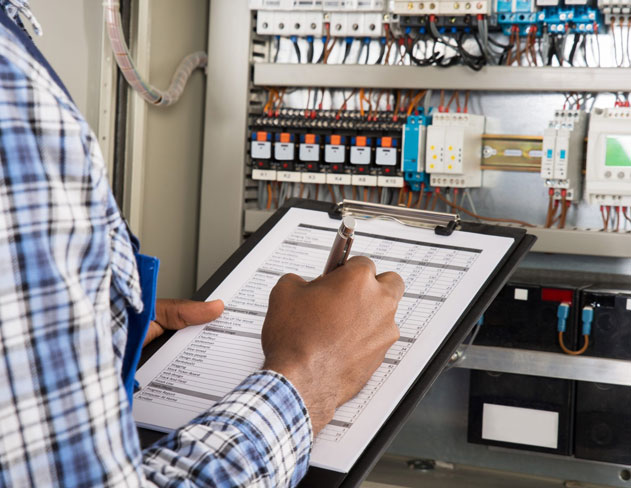
Is EICR Compulsory for Landlords? An Extensive Guide to the Regulations
As a private landlord, you’re no doubt aware of the myriad of legal requirements you must adhere to in relation to EICRs, especially when it comes to ensuring the safety of your tenants. There are a number of legal considerations and responsibilities landlords carry for their property, as we explore below.
Legal Requirements for Landlords – What Are The EICR Rules For Landlords
As a landlord, it’s crucial to understand the legal requirements surrounding the EICR. The ‘Electrical Safety Standards in the Private Rented Sector (England) Regulations 2020’ were introduced to improve tenant safety by ensuring that all electrical installations in rented properties are inspected and maintained regularly. Here are the key points:
- Mandatory EICR: It’s a legal requirement for landlords to have an EICR conducted every five years. This applies to all private landlords in England. The EICR must be conducted by a qualified person, who will thoroughly inspect the electrical installations in the property and identify any potential safety issues.
- New and Existing Tenancies: The regulations came into effect for new tenancies from 1st July 2020 and for existing tenancies from 1st April 2021. This means that even if you have long-term tenants, you still need to ensure an EICR is conducted. The report must be provided to new tenants before they occupy the property and to existing tenants within 28 days of the inspection.
- Houses in Multiple Occupation (HMOs): The EICR regulations also apply to HMOs. If the HMO property is the tenant’s main residence and they pay rent, the same EICR regulations apply. Learn more about HMO EICR regulations
- New Builds or Rewired Properties: If a property is newly built or has been fully rewired, an Electrical Installation Certificate (EIC) is issued. After five years, an EICR will be required for the property, provided the landlord has complied with all necessary regulations.
Legal Implications of Non-Compliance
Failing to comply with these regulations can have serious legal implications:
- Financial Penalties: Landlords could face a fine of up to £30,000 if they fail to provide proof of an EICR report when requested by the local authority. The local authority has the power to enforce the regulations and can serve a remedial notice if they have reasonable grounds to believe the landlord is in breach. If the landlord fails to comply with the remedial notice, the local authority can arrange for remedial work to be carried out and recover the costs from the landlord.
- Invalid Insurance: Non-compliance with the EICR regulations can lead to loss of property insurance coverage. This means that in the event of an electrical disaster, you may not be covered by your insurance. Many insurance providers require proof of an EICR to provide coverage for rented properties.
- Legal Liability: If an electrical disaster occurs due to non-compliance with the EICR regulations, landlords could be held legally liable. This could result in further financial penalties and potential legal action. In the worst-case scenario, landlords could face criminal charges if a tenant is injured or killed as a result of faulty electrical installations.
Legal Exemptions
While the EICR regulations apply to most private landlords in England, certain types of tenancies are exempt. However, it’s important to note that even if a tenancy is exempt from the EICR regulations, landlords still have a duty of care to ensure the electrical safety of their properties. Here are the key exemptions:
- Social Housing: Properties provided by private registered social housing providers are exempt from the EICR regulations. These providers are usually non-profit organisations such as housing associations, and they have their own set of regulations to follow regarding property safety.
- Long Lease Tenancies: Tenancies granting the right of occupation for seven years or more are exempt from the EICR regulations. This is because tenants in these situations often have greater control over the property and may be responsible for the maintenance and safety of the property themselves.
- Student Accommodation: Purpose-built student accommodation is exempt from the EICR regulations. However, this doesn’t include Houses in Multiple Occupation (HMOs) that are rented to students. In these cases, the EICR regulations still apply.
- Shared Accommodation with the Landlord: If the tenant shares accommodation with the landlord, the property may be exempt from the EICR regulations. This is often the case in lodger arrangements.
Understanding the EICR
The EICR, also known as a ‘periodic inspection’, is a detailed assessment of the electrical installations within a property. Its primary objective is to ascertain whether the electrical installations within a property adhere to the latest safety standards as outlined in the BS 7671 Requirements for Electrical Installations (IET Wiring Regulations).
An EICR examination is conducted by a qualified electrician and covers a range of checks, including the evaluation of all light fittings and sockets, assessment of the fuse box, including circuits, fuses, power conductors, among other components, and the identification of potential electrical hazards.
The EICR report is divided into several sections, including details of the inspection, details of the installation, extent of the installation, and a summary of the installation’s condition. This report is crucial for landlords to understand the state of their property’s electrical installations and to ensure they meet the necessary safety standards.
Remedial Work Post EICR
If an EICR report determines that the property’s electrical systems are not compliant with the latest regulations, remedial work may be necessary. This work must be completed within 28 days of receiving the report, or within the period specified in the report if it’s less than 28 days. Here are some key points to consider:
- Types of Remedial Work: The remedial work required will depend on the issues identified in the EICR report. This could range from minor fixes, such as replacing outdated sockets or light fittings, to more significant work, such as rewiring the property or replacing the fuse box. The report will classify issues as C1 (danger present), C2 (potentially dangerous), or C3 (improvement recommended), which can help landlords prioritise the most urgent work.
- Arranging for Remedial Work: A qualified electrician should carry out the work. It’s important to choose a reputable professional who is familiar with the latest safety standards and regulations. Landlords should obtain a quote and a clear explanation of the work to be done before it commences.
- Completion of Remedial Work: Once the remedial work has been completed, the electrician should provide a written report confirming what work has been done and that the electrical installations now comply with the safety standards. This report should be kept as proof of compliance.
- Communication with Tenants and Local Authority: The record of these completed remedial works needs to be sent to the tenant and local authority within the 28-day window. It’s important to keep tenants informed about any remedial work that needs to be done, when it will be carried out, and any disruption it may cause. This helps maintain a good landlord-tenant relationship and ensures that tenants are aware of their rights and responsibilities.
EICR Validity
Even if a previous EICR was conducted less than five years ago, the report will no longer be valid if the regulations came into effect afterwards. As of 1st April 2021, private rental properties must have an electrical inspection and EICR every five years.
Cost of Conducting an EICR
The cost of an EICR varies based on several factors, including the size of the property, location, number of items tested, and overall condition of the electrics. Landlords can expect to pay between £100 and £300 for an EICR.
Conclusion
Complying with the EICR regulations is not just a legal requirement for landlords, but it’s also a crucial part of ensuring the safety of your tenants. By understanding and adhering to these regulations, you can avoid potential legal and financial implications and ensure your property remains safe for your tenants to live.

